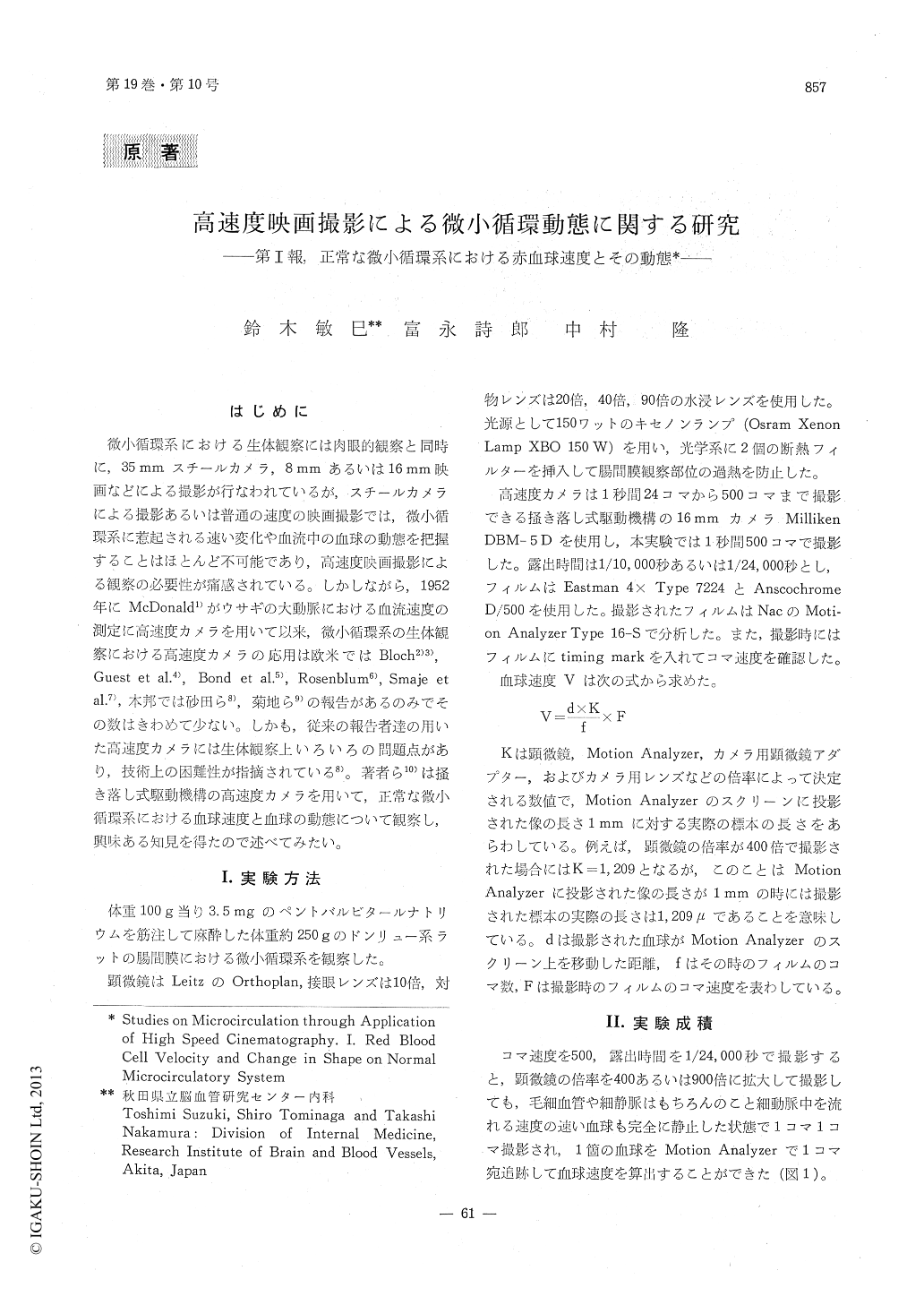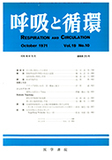Japanese
English
- 有料閲覧
- Abstract 文献概要
- 1ページ目 Look Inside
はじめに
微小循環系における生体観察には肉眼的観察と同時に,35mmスチールカメラ,8mmあるいは16mm映画などによる撮影が行なわれているが,スチールカメラによる撮影あるいは普通の速度の映画撮影では,微小循環系に惹起される速い変化や血流中の血球の動態を把握することはほとんど不可能であり,高速度映画撮影による観察の必要性が痛感されている。しかしながら,1952年にMcDonald1)がウサギの大動脈における血流速度の測定に高速度カメラを用いて以来,微小循環系の生体観察における高速度カメラの応用は欧米ではBloch2)3),Guest et al.4), Bond et al.5), Rosenblum6), Smaje et al.7),本邦では砂田ら8),菊地ら9)の報告があるのみでその数はきわめて少ない。しかも,従来の報告者達の用いた高速度カメラには生体観察上いろいろの問題点があり,技術上の困難性が指摘されている8)。著者ら10)は掻き落し式駆動機構の高速度カメラを用いて,正常な微小循環系における血球速度と血球の動態について観察し,興味ある知見を得たので述べてみたい。
The velocity and the behaviour of red blood cell of the normal microcirculation in the mesen-teries of male rats were studied byhigh speed cinematography at 500 frames per second. A Leitz Orthoplan microscope was used. A Osram's 150 watt xenon lamp with appropriate heat filters was used as the light source. Observations were made with a X 10 ocular and a X 20, a X 40 or a X 90 water immersion objective. The high speed camera used was a Milliken DBM-5 D. The ex-posure time was 1/10,000 second or 1/24, 000 second. The films were Eastman 4 X negative and Ans-cochrome D/500.

Copyright © 1971, Igaku-Shoin Ltd. All rights reserved.


